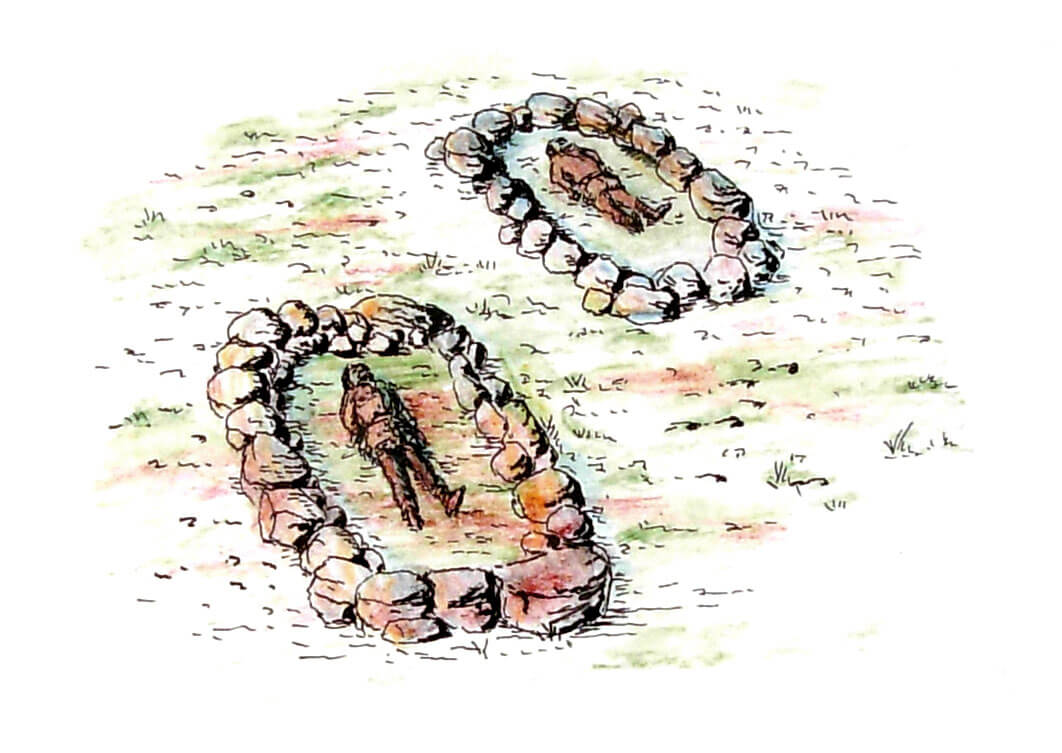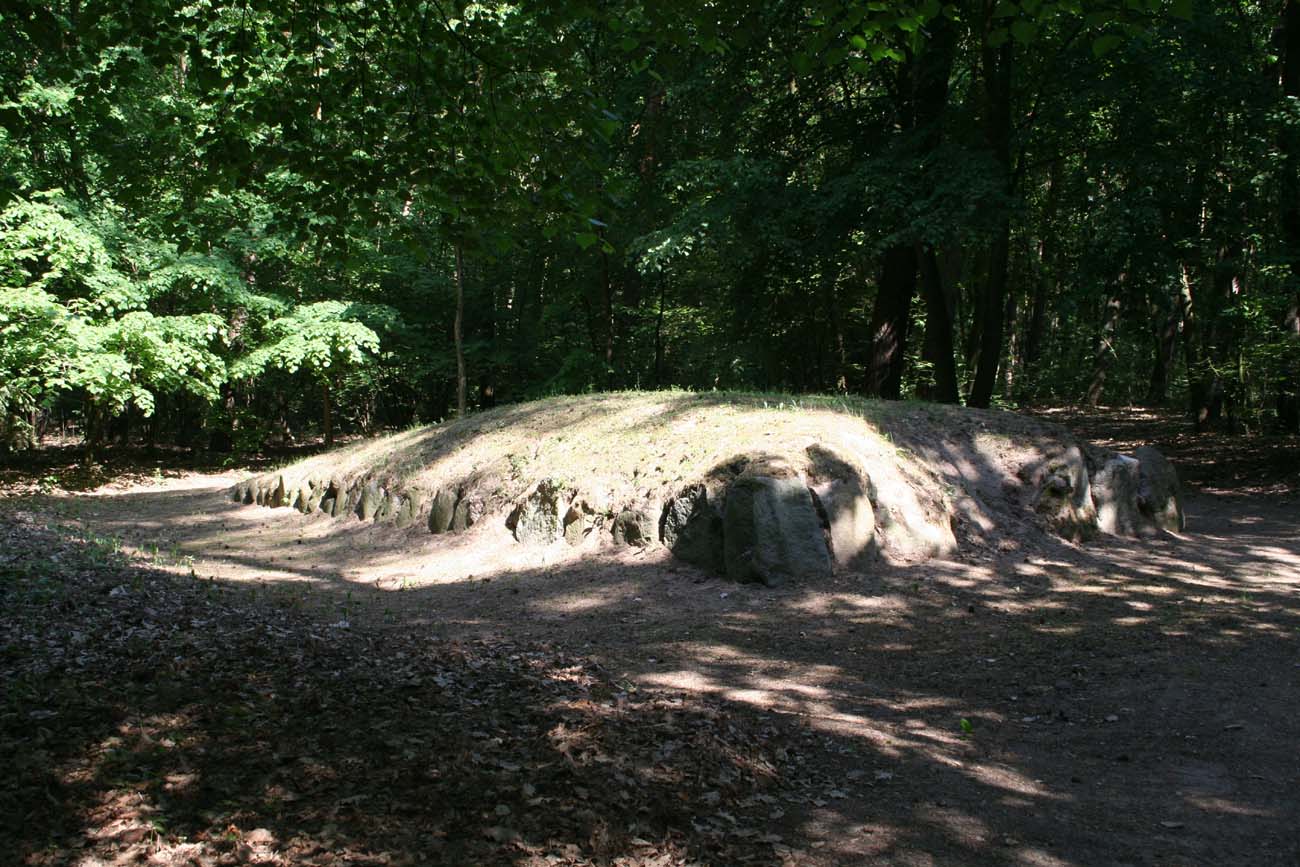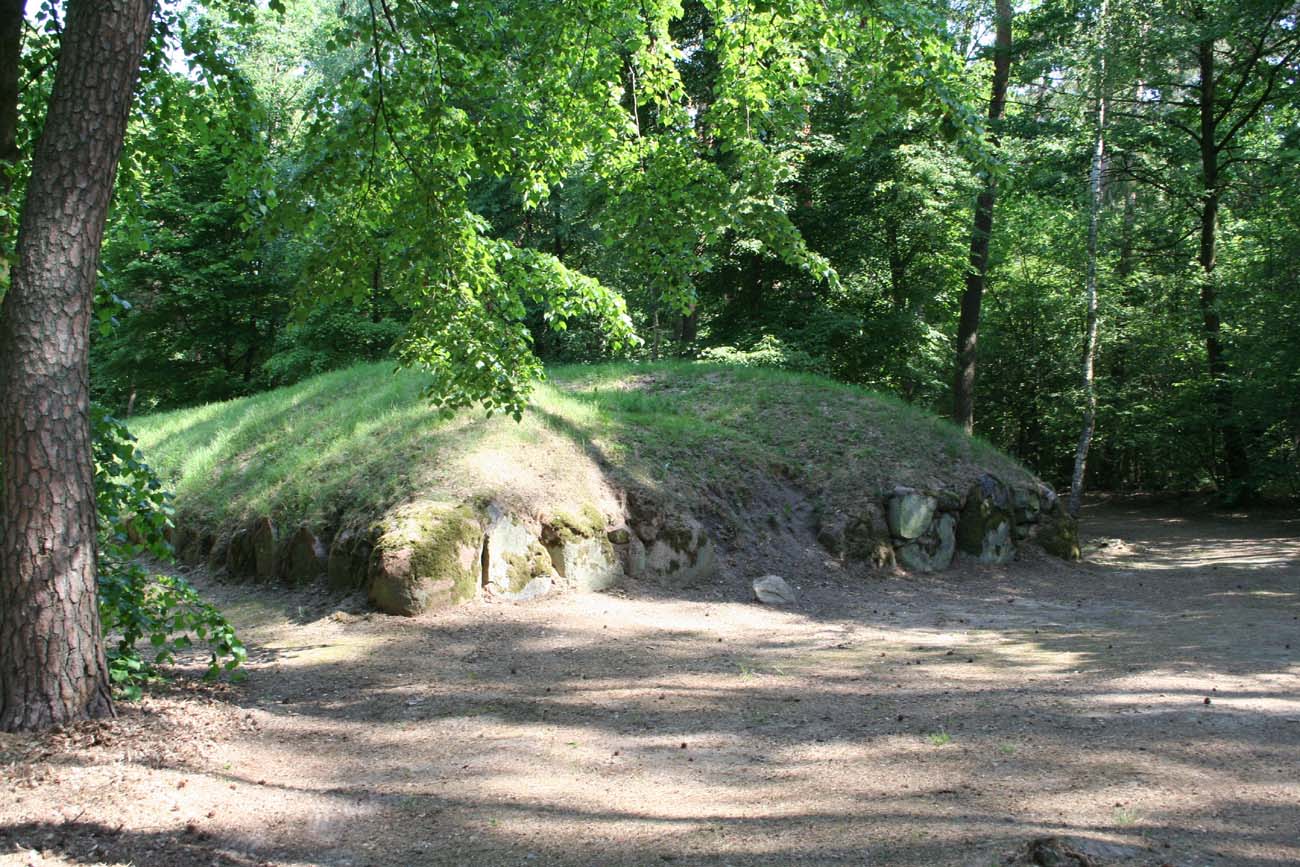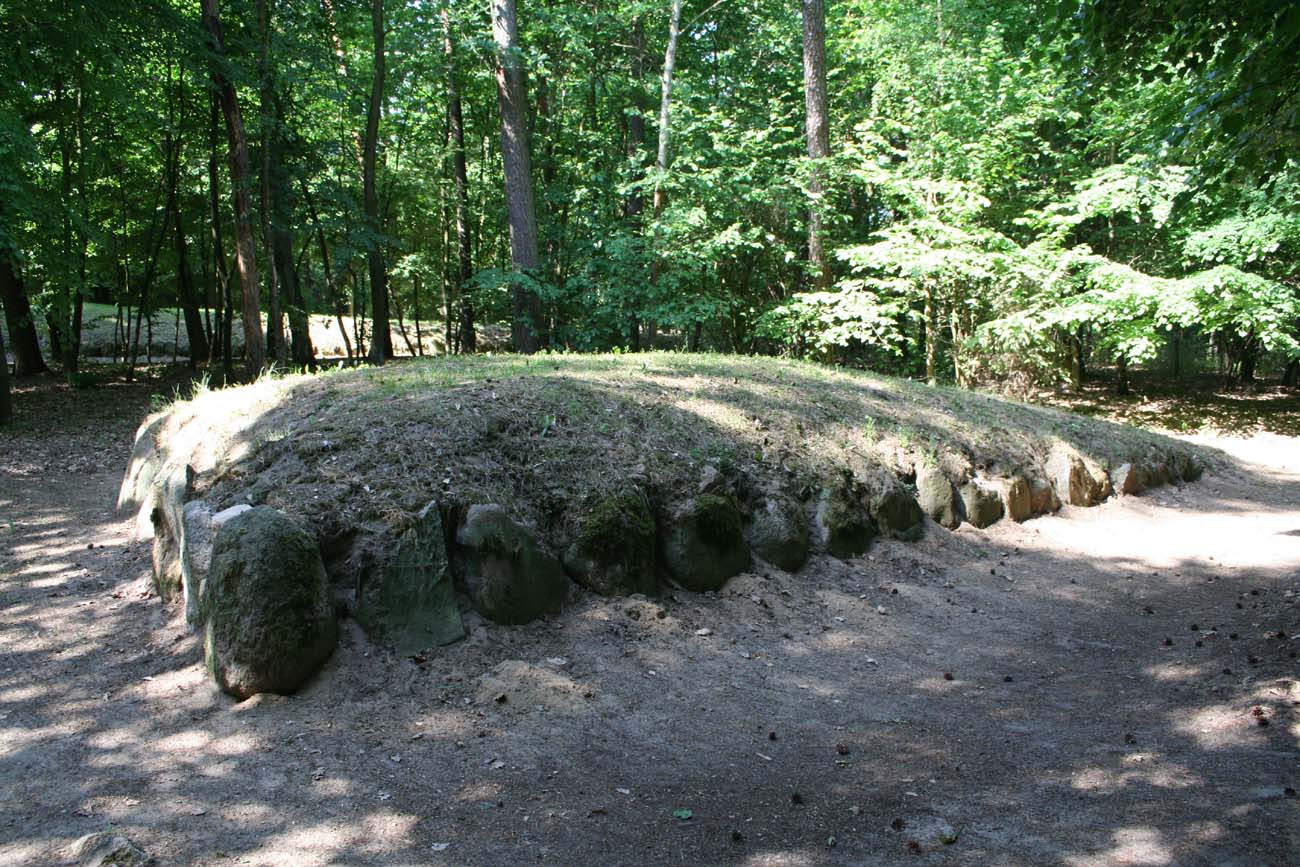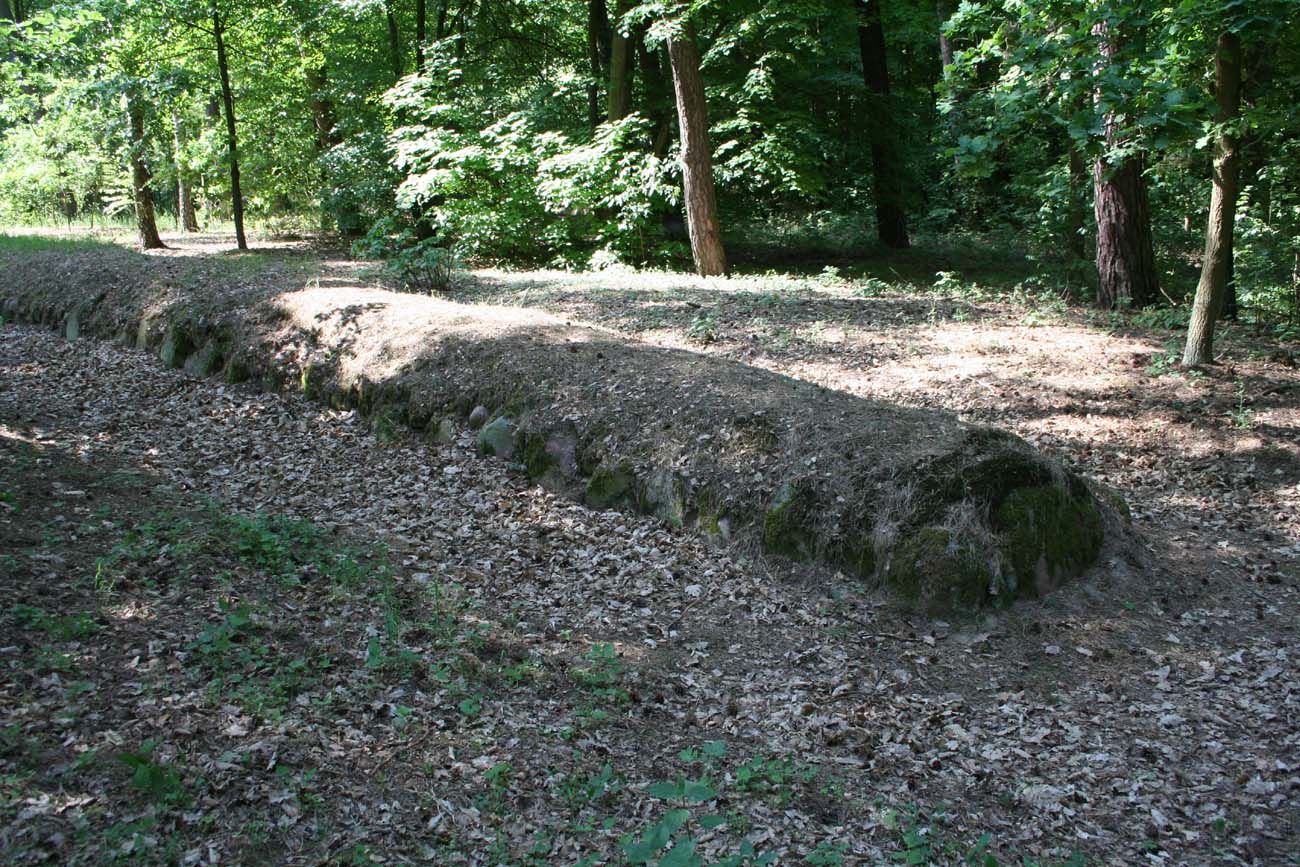History
The long barrows of Wietrzychowice were erected by the tribes of shepherds and farmers living in the surrounding areas around 3500 BC. Their builders belonged to the Funnelbeaker culture, formed in connection with the abandonment of the hunting way of life in favor of a settled, agricultural one. They created a system of religious beliefs, which was manifested in the construction of huge stone and earth structures.
Neolithic, megalithic tombs probably were the places of eternal rest for chiefs, local rulers, priests, or tribal elders. Celebrations in honor of the deceased were organized near them, so it is possible that they were also a place of worship rituals performed with the participation of the entire community. As tombs were a distinctive element in a space inhabited and developed by farmers, they could also serve for Neolithic communities as a visible symbol of ownership of a specific area. Moreover, by lying next to communication routes, they may have played the role of sort of signposts.
Megalith tombs were erected for over a thousand years, until the middle of the third millennium BC, when their construction was suddenly interrupted. Presumably, it was the result of the invasion of the lands of farmers by nomadic tribes dealing mainly with the shepherdess and war. With the newcomers, new beliefs probably emerged that superseded the old building tradition.
The megalithic tombs in Poland were destroyed mainly in the second half of the 19th century. There was a rapid economic development than, during which the stones from the tombs were used to build roads, houses and farm buildings. After the stone lining was removed, the mounds were leveled, often becoming arable fields. Only the tombs located in forests saved.
Architecture
The tombs were created in the form of mounds in the shape of elongated triangles, from several to several dozen meters long, although the largest ones were up to 100 – 115 meters in length. The highest mounds, up to about 5 meters high, were located in the frontal parts of the tombs, located from the south-east, then it clearly lowered and narrowed into characteristic “tails” about 1 meter wide and half a meter high. Along the edges, the barrows were covered with larger boulders and smaller stones, the weight of which at the front was 7-10 tons. As the barrow narrowed, the stones became smaller. The bigger ones were on the front of the tombs, the smaller ones along the “tail”, sometimes ended with one large stone. The gaps between the stones were sometimes sealed with clay.
In the front parts of the barrows, stone gaps were created. These were probably entrances to timber passages or rooms intended for the celebration of funeral rites. The dead were placed in stone chambers, mostly rectangular, 2-3 meters long and 1-1.5 meters wide, made of a dozen or so stones covered with stone slabs or a layer of earth and smaller stones. On average, about 150 m3 of stones and about 1000 m3 of earth were used to erect one barrow. The transport of the building material, due to the size and significant weight of the stone blocks, probably took place with the help of oxen. The tombs in Wietrzychowice were arranged in a fan-like manner so that their ends were focused and the frontal parts were separated from each other.
Only men were buried in these graves. Studies have shown that these were single burials, although there are cases of finding two men buried at the same time simultaneously. The dead were laid in an upright position, on his back. The heads of the deceased were directed to the head of the tomb. Modest burial equipment was usually limited only to one flint tool, a part of a vessel or a limestone, which indicates its symbolic character. The vessels and clay spoons, relics made of flint, including arrowheads, axes and battle axes have also survived to our times.
Current state
Kuyavian barrows are the oldest architectural monuments in Poland. Until today in the archaeological park in Wietrzychowice there are five tombs. Earth mounds, which before the excavations were supposedly from 80 cm to 1 meter high, after reconstruction reach over 2 meters. The tombs are located about 500 meters from the road. In order to protect them, in 2006 a Cultural Park was established, to which a marked path leads past mid-forest swamps and peat bogs.
bibliography:
Myrta A., Sukniewicz D., W krainie polskich piramid. Park Kulturowy Wietrzychowice, Izbica Kujawska 2008.
Papiernik P., Płaza D.K., Park kulturowy Wietrzychowice na europejskim szlaku megalitów, Łódź 2017.

